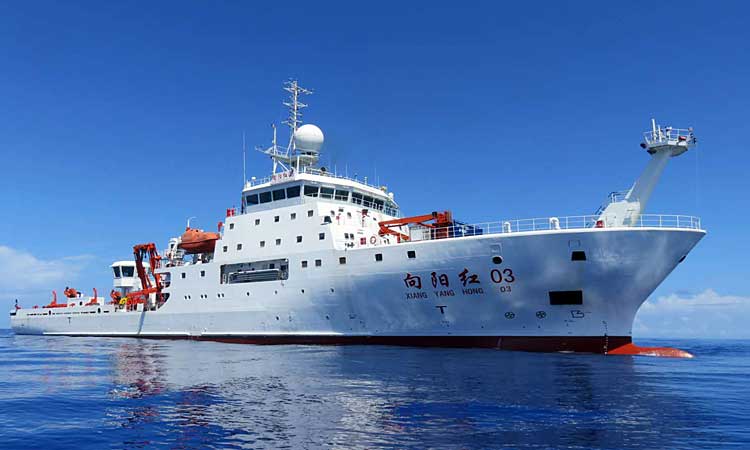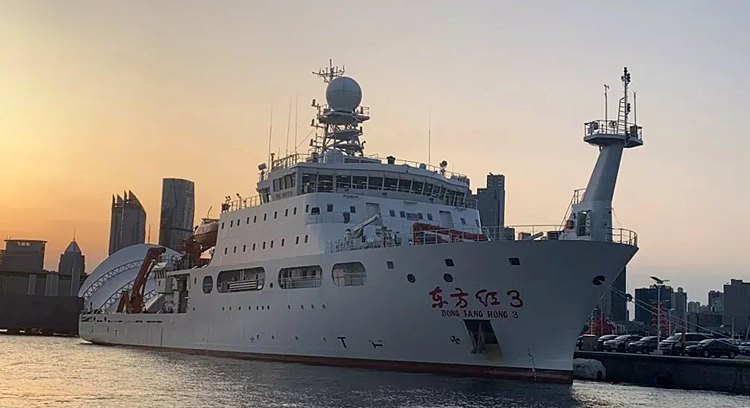INDIAN ARMED FORCES CHIEFS ON OUR RELENTLESS AND FOCUSED PUBLISHING EFFORTS

The insightful articles, inspiring narrations and analytical perspectives presented by the Editorial Team, establish an alluring connect with the reader. My compliments and best wishes to SP Guide Publications.

"Over the past 60 years, the growth of SP Guide Publications has mirrored the rising stature of Indian Navy. Its well-researched and informative magazines on Defence and Aerospace sector have served to shape an educated opinion of our military personnel, policy makers and the public alike. I wish SP's Publication team continued success, fair winds and following seas in all future endeavour!"

Since, its inception in 1964, SP Guide Publications has consistently demonstrated commitment to high-quality journalism in the aerospace and defence sectors, earning a well-deserved reputation as Asia's largest media house in this domain. I wish SP Guide Publications continued success in its pursuit of excellence.
- Global Partners Urged to Tap India's Shipbuilding Potential: Rajnath Singh at Samudra Utkarsh
- All about HAMMER Smart Precision Guided Weapon in India — “BEL-Safran Collaboration”
- India, Germany deepen defence ties as High Defence Committee charts ambitious plan
- G20 Summit: A Sign of Global Fracture
- True strategic autonomy will come only when our code is as indigenous as our hardware: Rajnath Singh
- India–Israel Joint Working Group Meeting on defence cooperation to boost technology sharing and co-development
China's Deep-Sea Obsession
The Undersea Great Wall Project, by the China State Shipbuilding Corporation (CSSC), comprises a comprehensive underwater observation system in the South China Sea (SCS) region
 |
The Author is Former Director General of Information Systems and A Special Forces Veteran, Indian Army |

China's ongoing 'Undersea Great Wall Project' plus other initiatives to deter underwater threats, including (submarines and unmanned underwater vehicles (UUVs), have been progressing over the years. The project includes deploying underwater sensors at depths of about 2,000 meters to track ships and submarines; to monitor and deter potential threats, including those from the US and adversary navies. In addition, China has developed and deployed underwater drones in the SCS for surveillance and reconnaissance, which can be used for other purposes as well.
China's most advanced oceanographic vessels, 'Xiang Yang Hong 01' and 'Dong Fang Hong 3' have been mapping large stretches of the eastern Indian Ocean in recent times
It was reported in these columns recently that China has developed an undersea cable cutter with the ability to cut steel and armoured cables at a depth of 4,000 meters. If China cuts undersea internet and communication cables it would affect not only Taiwan but the whole world. According to news reports of April 11, 2025, Taiwan charged a Chinese-crewed 'Hong Tai 58' ship with intentionally damaging undersea cables off the island in February this year, after a rise in sea cable malfunctions alarmed Taiwan officials amid tensions with China. The prosecutors' office in the southern Taiwanese city of Tainan said they had charged the ship's Chinese captain, whom they identified only by his family name, Wang, with being responsible for damaging the cable. Notably, the undersea cable cutter can be mounted on a cheap submersible and is controlled by a robotic arm. China can even deploy this weapon from its civilian/fishing vessels. These developments have implications for global connectivity and security, including for India, given the increased Chinese activities in the Indian Ocean Region (IOR).
China is also rapidly advancing its deep-sea exploration, sending fleets of research vessels far beyond its shores, for mapping the seabed for naval advantage to securing critical minerals; leveraging oceanography for strategic dominance and mineral wealth. Beijing naturally says these missions are for purely scientific purposes, but China does 'nothing' which does not without a military and strategic agenda. Submarines rely on underwater topography and soundscapes to hide from enemy detection. The seabed maps can be a game-changer in submarine warfare; enabling detection, evasion and countering enemy submarines more effectively.
China is constructing the world's first 'Deep Sea Station' in the SCS to extract billions of tons of energy; Beijing officially confirmed the project on March 1, 2025.
China's most advanced oceanographic vessels, 'Xiang Yang Hong 01' and 'Dong Fang Hong 3' have been mapping large stretches of the eastern Indian Ocean in recent times. The Xiang Yang Hong 01 even sailed into India's Exclusive Economic Zone (EEZ) near the Andaman and Nicobar Islands, raising alarms in New Delhi. China's research ships have also been spotted near India's naval testing sites just before missile launches.
According to the media reports of April 8, 2025, China's research vessel 'Dong Fang Hong 3' has just concluded survey of the Ninety East Ridge, a linear interpolate rise on the ocean floor (considered ideal for submarine operations because of its underwater topography) in the IOR; indicating China's deep-sea maritime ambitions by Chinese submarines also conducting scientific missions. Dong Fang Hong 3, with its low-noise propulsion system (electric azimuth thrusters and bow thrusters), makes this 5,000-tonne, 103-metre-long vessel 'stealthy'. It is designed for deep-sea and distant-water survey, and is capable of operating at depths of up to 10,000 metres and deploying UUVs.

China is also leading the race to exploit deep-sea minerals, which are essential for modern technology, including electric vehicles and advanced weaponry. In January this year, China and the Cook Islands announced a comprehensive partnership, including collaboration on oceanographic research. Cook Islands, having a population of 15,000, controls an EEZ over 7,00,000 square miles rich in mineral resources.
The latest is that China is constructing the world's first 'Deep Sea Station' in the SCS to extract billions of tons of energy; Beijing officially confirmed the project on March 1, 2025. The habitat for this permanent undersea research station, to study gas hydrates, will be built in methane-rich "cold seep" zones, where six researchers will live for month-long missions to analyse these crystalline formations of methane trapped in ice. With an estimated 80 billion tons of oil-equivalent energy (exceeding the Gulf's 50 billion-tons of proven oil reserves), these hydrate deposits have the potential to reshape global energy dynamics. This deep-sea station is set to begin operation by 2030.
Chinese breakthroughs in underwater operations, including detection technology, are bound to have profound implications for global naval dynamics
Currently, about 85 per cent of China's oil imports pass through the Strait of Malacca (a narrow choke point between Malaysia and Indonesia) that can be blocked by the US and other adversaries of China. that adversaries like the US could potentially block in a conflict. Once the 'Deep Sea Station' becomes operational, China can secure domestic methane supply from the SCS, easing its strategic vulnerability. For China, the SCS represents a vital strategic and economic lifeline. The shipping lanes within this region carry approximately $3.4 trillion worth of goods annually, including critical resources like oil and natural gas. Controlling these waters gives China significant leverage over global trade and strengthens its geopolitical influence.
Methane burns cleaner than coal, producing about half the carbon dioxide emissions, and could gradually reduce China's reliance on imported oil. This is particularly crucial for its navy, which depends on a steady fuel supply to operate. The Deep Sea Station extends beyond research to China's strategic manoeuvre in the SCS, which will also have global ramifications. This in not the first time that China has surprised the world. The US is also undertaking sea-bed survey but a Deep Sea Station is an altogether novel initiative.
When it comes to technological advancements, China continues to surprise the world. China has already launched the world's first 10G broadband network, delivering 9,834 Mbps download and 1,008 Mbps upload speeds. Concurrently, China has unleashed the CMA CGM SEINE, the world's largest dual-fuel container ship; a 399 meter LNG-powered vessel that carries 24,000 TEUs and sails 20,000 nautical miles without refuelling, demonstrating how Chuna is steering green technology.
If China cuts undersea internet and communication cables it would affect not only Taiwan but the whole world
In terms of deep-sea operations, Chinese scientists from Harbin Engineering University have unveiled a revolutionary acoustic technology capable of detecting low-frequency sound sources from extreme ocean depths, according to news reports of April 20, 2025. By analysing data from China's Arctic explorations, scientists have discovered that lower-frequency sound waves can traverse between ocean layers, complicating traditional detection methods. However, this challenge is mitigated by the frequency of the sound waves, which plays a crucial role in determining their behaviour. Chinese researchers have demonstrated a remarkable ability to isolate and track sound sources with near-perfect precision.
This groundbreaking technology has the potential to significantly enhance China's underwater warfare capabilities, particularly in strategic regions like the Arctic's Beaufort Sea. This technology of accurately pinpointing underwater vessels can shift the balance of naval power. Notably, the US heavily relies on this region as a gateway to Alaska. Recent advancements in sound wave tracking have unveiled new possibilities in underwater combat and exploration. Chinese breakthroughs in underwater operations, including detection technology, are bound to have profound implications for global naval dynamics.
Notably, India has two licenses for mineral exploration in the Indian Ocean. The first one (2002-2027) covering 75,000 sq km in Central Indian Ocean at a depth of six km (about 6,000 km off India's coast for polymetallic modules; iron. manganese, cobalt and copper. The second one (2016-2031) covering 10,000 sq km near Mauritius for nickel, cobalt, zinc and copper etc. But there is no news whether India has attempted any recovery at all of these minerals since 2002.





